- Home
- slideshows
- miscellaneous
- Sobering photos reveal how countries are dealing with the dead left by the coronavirus pandemic
Sobering photos reveal how countries are dealing with the dead left by the coronavirus pandemic
As the death toll from the coronavirus pandemic mounts, concerns about the safe handling of COVID-19 bodies remains high.

In Wuhan, China, where the outbreak began, funerals, burials and other related activities involving the corpses of deceased victims were banned months ago.
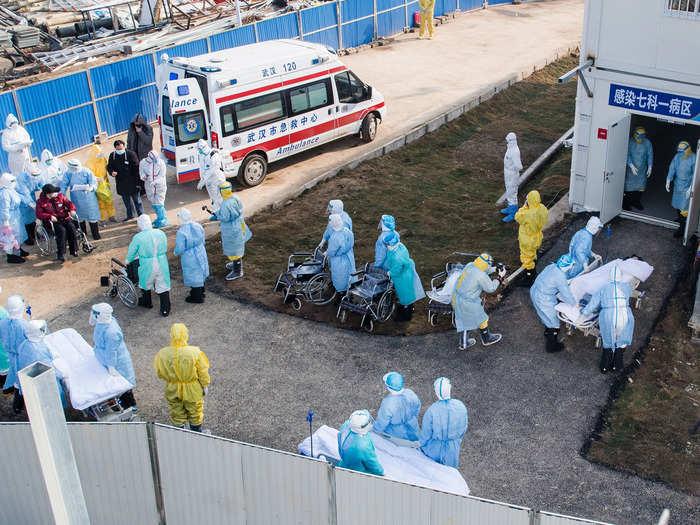
China's National Health Commission issued regulations on February 1 stating that all victims who died of the coronavirus must be cremated at the nearest facility. "No farewell ceremonies or other funeral activities involving the corpse shall be held," the NHC announcement reads.
Wuhan, and most of China, was locked down in late January, making it extremely challenging for families to pick their loved ones' ashes until recently, NPR reported.
Authorities in Wuhan have required that families reserve a time slot to pick up those ashes and bury them, according to NPR, all while accompanied by an official.
The pandemic has shaken Europe. In Ukraine, the town of Dnipro forbid medical workers from carrying out autopsies on those believed to have died from the virus.
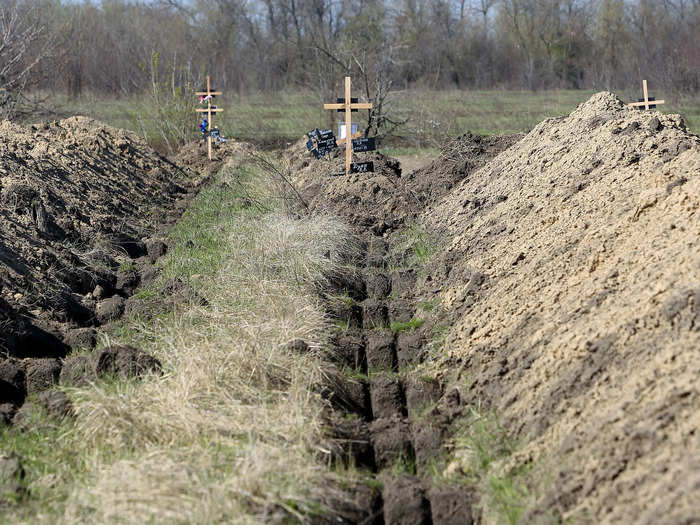
Dnipro has dug 615 graves and readied 2,000 seal-able body bags in preparation for COVID-19 fatalities, the mayor's spokeswoman, Yulia Vitvitsk, told AFP on April 6.
"We are preparing for the worst," mayor Borys Filatov said on his Facebook page last week.
Italy is undoubtedly one of the hardest hit countries. The Mediterranean nation has one of the highest death tolls to date: more than 19,900 since its first confirmed case on January 31.
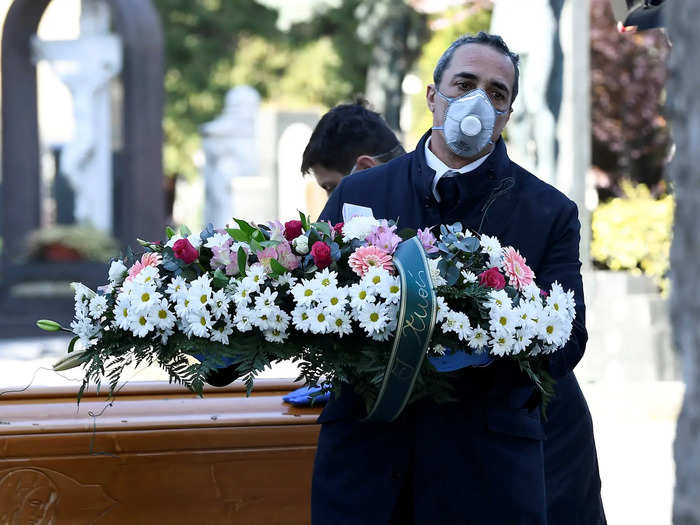
Italy passed an emergency national law that banned religious ceremonies, including funerals.
In Bergamo, one of the country's outbreak epicenters, a video showed a convey of Italian army trucks ferrying dozens of coffins to remote cremation sites because local morgues couldn't cope with the number of new deaths.
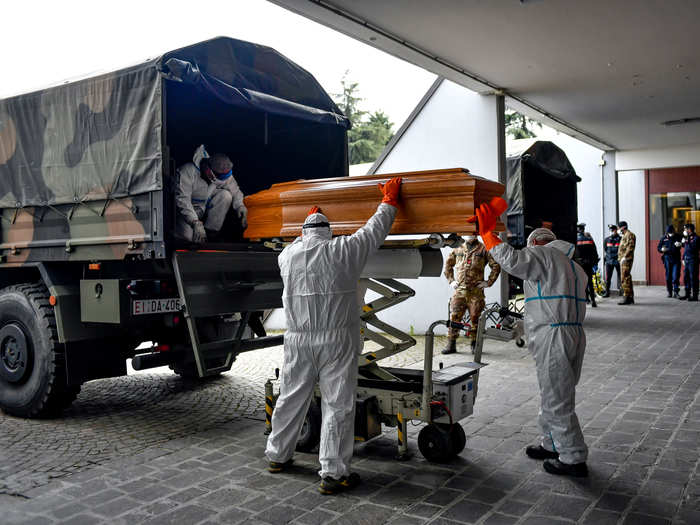
A convoy of at least 10 military trucks was filmed passing through the city on March 18.
The army was transporting 61 bodies to cremation sites in 12 Italian towns, including Modena and Parma, the national newspaper Corriere Della Sera reported.
Spain has also made some difficult decisions regarding funerals during its outbreak.
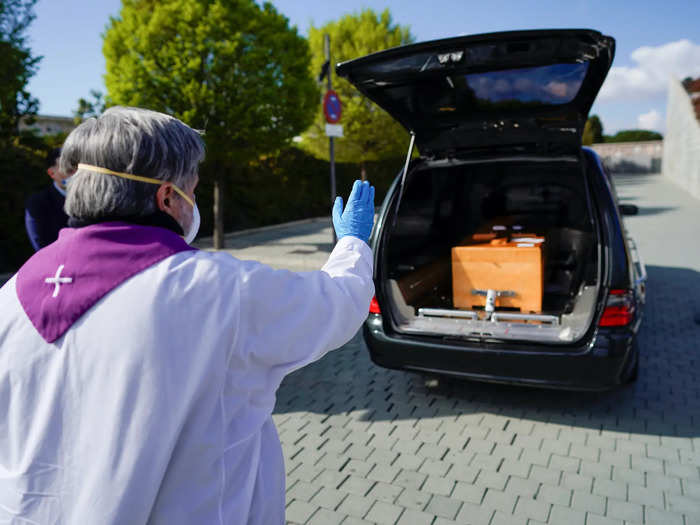
On April 2, Spain set a grim record in the coronavirus pandemic, recording more deaths in a single day than any nation so far: 950.
Strict bans on gatherings have limited Spaniards' ability to mourn and properly bury their dead. CNN reported that, in the capital of Madrid, drive-through funerals are commonplace. Families must say farewell to their loved ones from a distance; there's no visitation or public burial.
In March, burial pits in Qom, Iran grew so large amid the country's devastating coronavirus outbreak that they were visible from space.
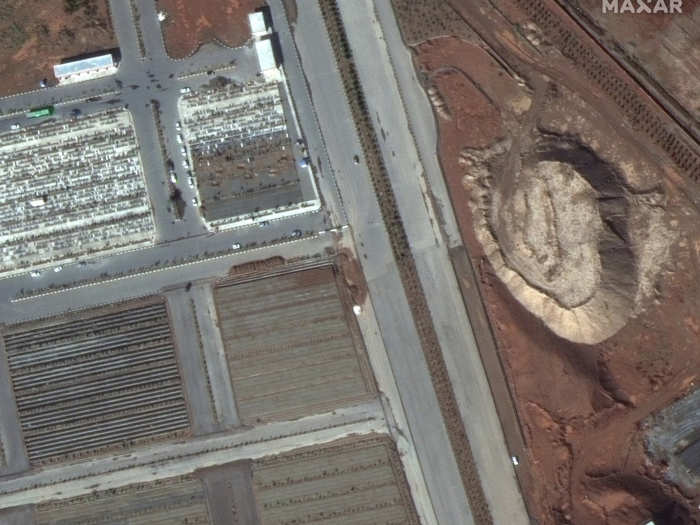
This satellite image, taken by the private space technology company Maxar Technologies, shows the Behesht-e Masoumeh complex, which includes the city's biggest cemetery.
Iranian authorities dug two new trenches, both about 100 yards, last month. The images suggest that graves were being hurriedly dug, which underscores the scale of the outbreak in Iran — and the difficulties officials are having in quelling it.
There have been more than 68,000 coronavirus cases reported in Iran, and at least 4,200 deaths.
The story in South America is similar: Ecuador is racing to build an emergency cemetery outside Guayaquil, its largest city, as the country runs out of burial plots.
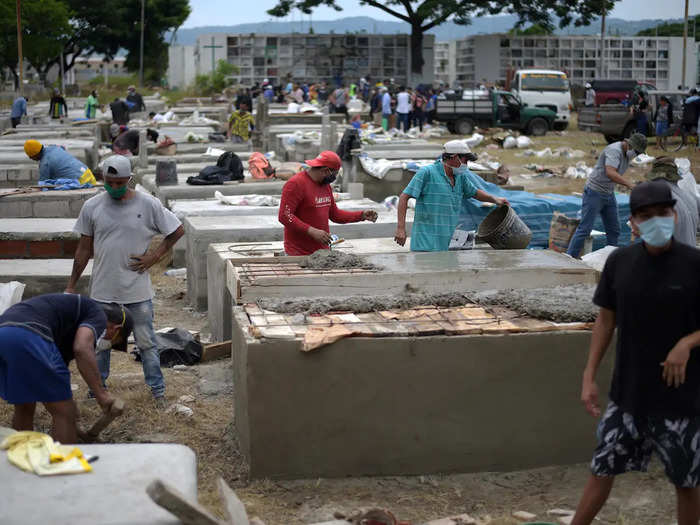
The country has more than 4,000 cases, and at least 220 deaths linked to the virus, and NBC News reported that delays with funerals had some families keeping dead bodies in their homes for days.
The Ecuadorian government, which began storing bodies in giant refrigerated containers last week, hopes to bury about 100 people a day at Guayaquil's new cemetery, which can fit 2,000 plots.
In New York City — now the epicenter of the pandemic — at least 6,150 people have died from COVID-19. Anticipating the rising death toll, the city rolled out dozens of refrigerated semi-trailer trucks and complexes of chilled tents near hospitals.
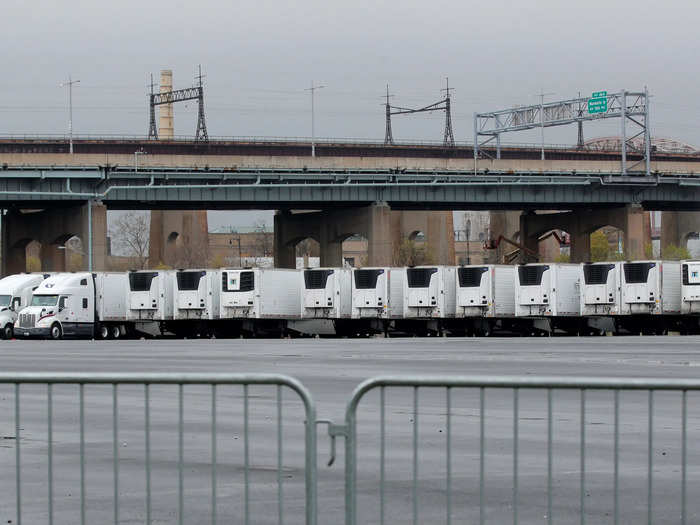
An average of 428 people have died each day within the city's five boroughs from COVID-19 from April 1-7, or about one person every 3 minutes 22 seconds. But that counts likely does not include probable cases like at-home cardiac arrests.
Funeral directors, who claim the bodies from morgues for families, say they are overwhelmed by the slow-moving disaster in NYC and can't keep up.
"I don't know how many more bodies I can take," Patrick Marmo, a funeral-home operator based in Brooklyn, previously told Business Insider. "No one in the New York City area possibly has enough equipment to care for human remains of this magnitude."
Yet even temporary morgue facilities, which expanded typical capacity for 900 bodes to more than 3,600, became so full that officials began discussing alternative options, including temporary interment in city parks.

Mark Levine, the chair of the city's Council Health Committee, said on April 6 that officials were preparing to dig trenches in a city park to temporarily bury the bodies of those who have died from COVID-19 — an option described in the city's 2016 fatality surge plan.
He later walked back the notion.
"I have spoken to many folks in City gov't today, and received unequivocal assurance that there will be *no* burials in NYC Parks," Levine later tweeted. "All have stated clearly that if temporary interment should be needed it will be done on Hart Island."
What the city did do was speed up the burials of unclaimed bodies on a remote island in the Bronx.
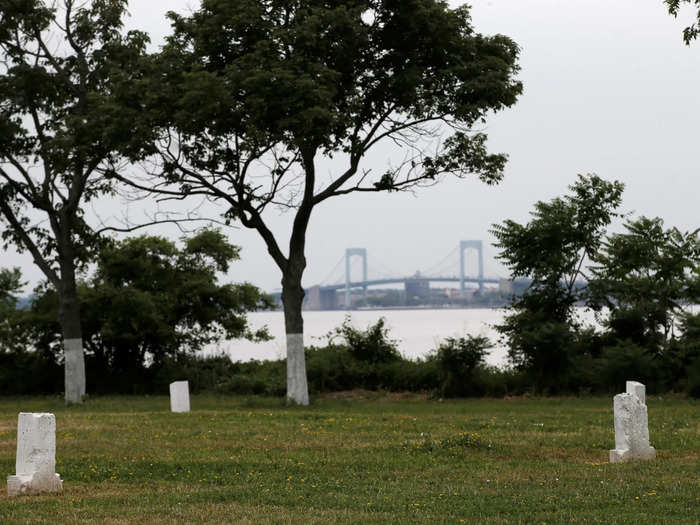
The city's Office of the Chief Medical Examiner (OCME) stated Thursday that decedents not claimed from temporary storage by a funeral home within 14 days would be interred at the Bronx's Hart Island.
OCME initially planned to wait only six days, but funeral directors pushed back, arguing the pandemic and backup of bodies might prevent families from getting their loved ones' remains in time.
Hart Island is home to a graveyard called City Cemetery, contains more than 1 million unclaimed bodies — the largest such site in the US.
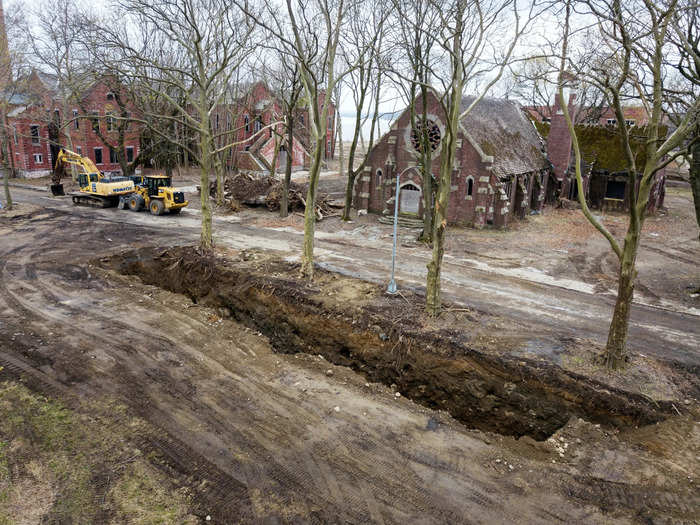
Those who are interred can either be removed by family members or left at rest for no cost, the OCME website added.
Mass burials occur on Hart Island on a weekly basis, but an unnamed funeral director who's familiar with the disinterring process there indicated it was highly unusual to see a roughly 200-foot-long trench dug in anticipation of the many bodies that the city expects to arrive.
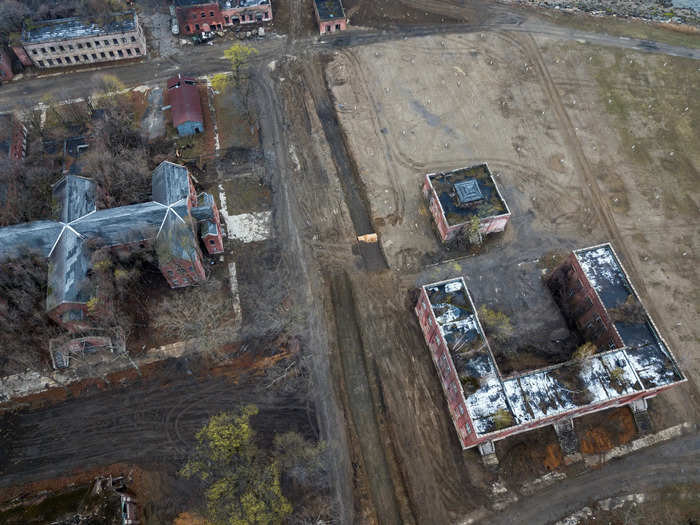
If hundreds (or even thousands) of bodies are buried there in the coming weeks, families might have to wait until long after the pandemic subsides to claim and move loved ones to a final resting place.
"It's going to take years to get bodies off of Hart Island at that rate," the funeral director told Business Insider.
"The pictures of our fellow New Yorkers being buried on Hart Island are devastating for all of us," NYC mayor Bill de Blasio tweeted on Friday.
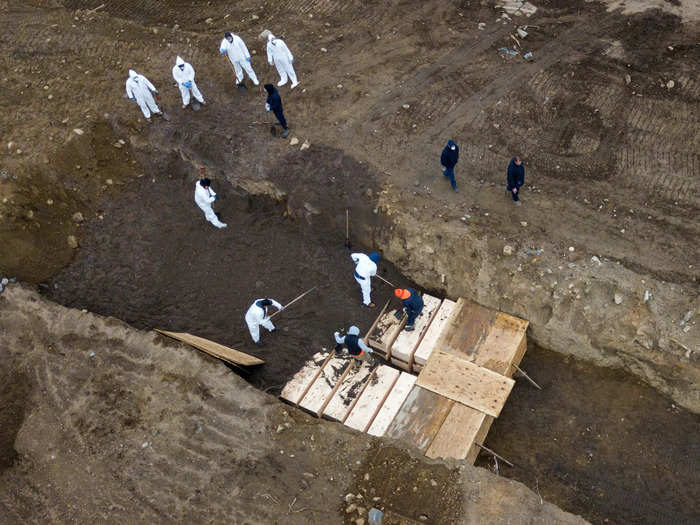
De Blasio added: "There will be no mass burials on Hart Island. Everything will be individual and every body will be treated with dignity. [...] We do not anticipate temporary burials on Hart Island except for the unclaimed."
John Haltiwanger contributed reporting to this story.
Popular Right Now
Popular Keywords
Advertisement